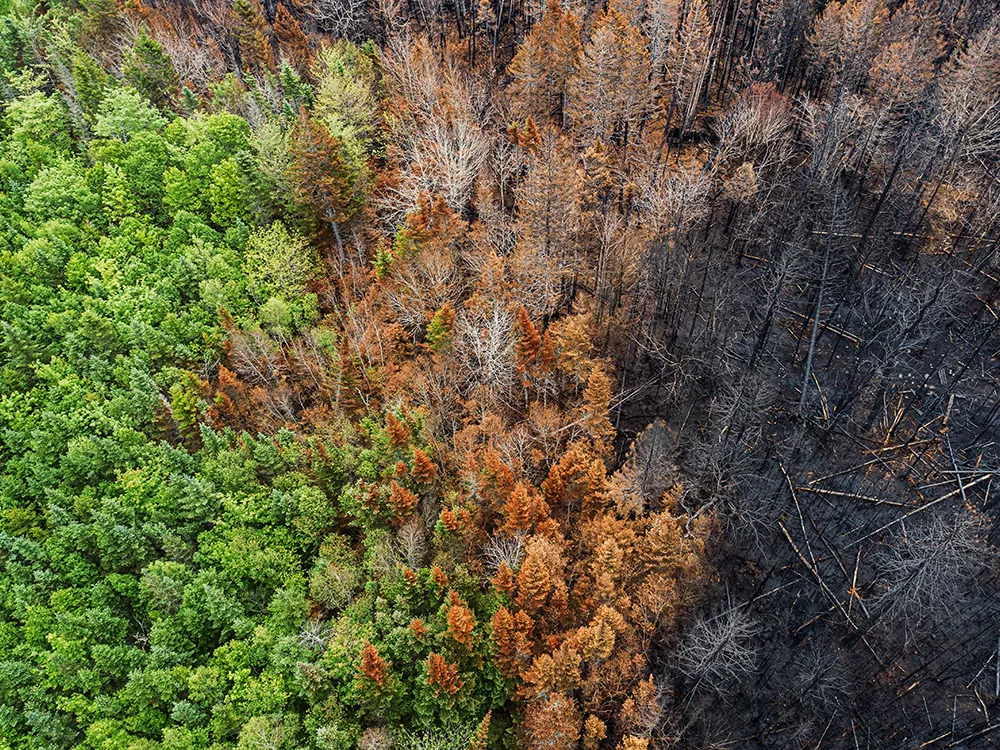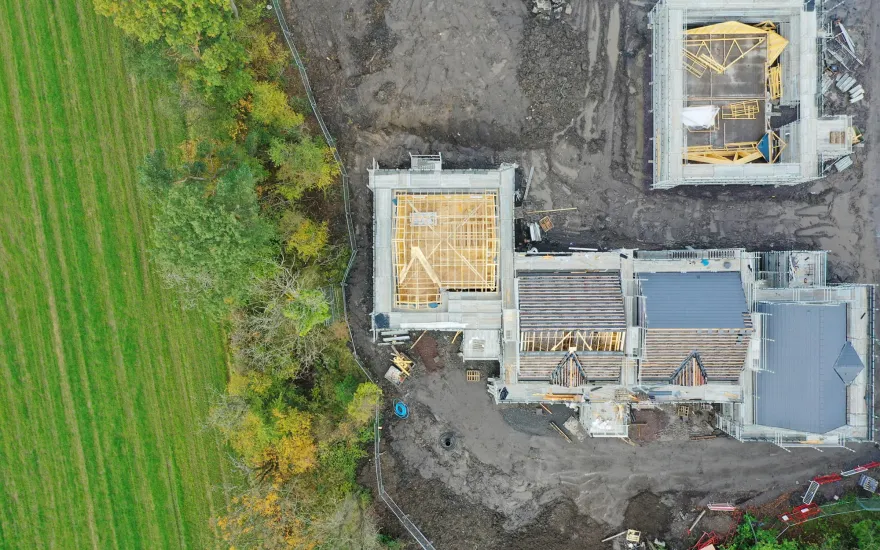Now live: The 2025 Canopy Report. Learn how Americans see trees. GET THE REPORT
Bulletin
How to Reduce Wildfire Risk
The purpose of this bulletin is to help stop a national tragedy. The annual loss of homes destroyed by wildfire would decrease if more people were aware of the fact that no area of the country is immune to these disasters, that the right use of trees and other vegetation — not necessarily their elimination — can help protect homes, and that some basic principles should guide home construction in forested areas.

“I’ve lost everything I own except what I was wearing.”
“All of a sudden, these huge clouds of black smoke appeared and ashes were falling all around the house.”
“I’m only glad we got out alive.”
How many times have you heard words like these on the evening news? It seems like it has become an annual event as forests, grasslands, brush fields, and homes are consumed by the flames of wildfires. But is it inevitable?
“Fire is the dominant fact of forest history,” wrote Stephen H. Spurr and Burton V. Barnes in their book, Forest Ecology. Fire has always been as much a part of nature as rain and sunshine. In some areas of the United States, fires cleared the prairie grasses almost annually or burned lightly through pine forests in cycles of 10 to 20 years. Elsewhere, fires were less frequent, but eventually the forests burned. In the 20th century, humans thought they could tame wildfire or rid it from our presence. Only in recent years have we come to understand the folly of this notion and the consequences. Fires will burn, and when natural fires are held in check, dried grass, brush, fallen branches, and an increased density of trees result in a buildup of what experts call fuels. When fuels are combined with dry weather, wind, and an igniting flame, the result is a conflagration.
Into this setting has come a new element in the past 20 to 30 years — homes. Many Americans have a penchant for living in the country, and good roads and technology have made this practical for millions of families. Unfortunately, when combined with the inevitability of fire, a potentially tragic situation has been created. But while fires can and will happen, there are many ways to reduce the risk of damage to homes.
The loss of homes and other buildings as a result of forest, grass, and brush fires is staggering. Landscaping to reduce the risk of loss from wildfires can go a long way toward ending these annual tragedies.
In This Bulletin
Here’s what’s inside:
- The Wildland/Urban Interface – defining these spaces and steps to take to reduce wildfire risk
- Frequent Maintenance Is Essential – keeping the landscaping cleaned up is key
- So Are Location, Design, and Materials – more things to consider on your property
- Are Wildlife Fires an Urban Forestry Issue? – urban forestry planning to reduce the risk of wildfire
